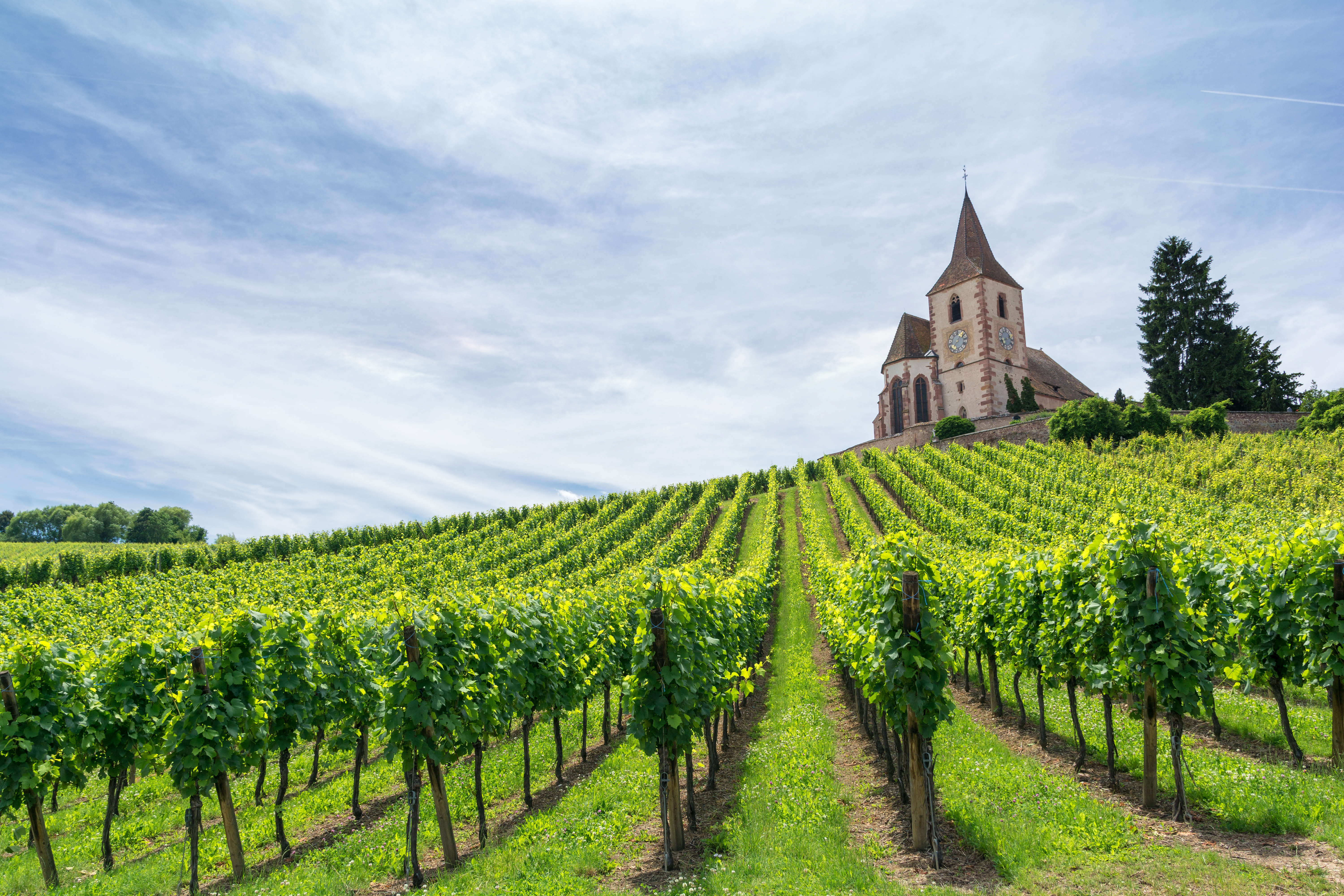The Alsace AOC of France makes it easy to figure out what is in the bottle (for the most part…more on that later in the post). As we mentioned a few times earlier in this series, the Alsace AOC is the only region that labels varietal wines. As to why that is, you must look into the history of Alsace as a region for the answer.

Arguably the most-thrown-around-amongst-different-rule-dating-back-to-the-Romans area of the major wine regions of Europe, Alsace has changed hands so many times over the course of history, it’d take an entire post to make sense of it all. We’re going to stick with our theme of simplicity here and fast forward to current times, just saying it was French, then German, then French again. The architecture, language, and grape varieties in the region reflect this back and forth, and in modern times, speaks to the French region’s German past.
While wines from the area are referred to as “Vin d’Alsace” You’ll find houses with names like ‘Zind-Humbrecht’ (pretty German if you ask us), who produce ‘Grand Cru’ (yeah, that is French) ‘Riesling’ (German, again).
Confusing? Possibly.
Delicious? Absolutely.
Here you have the deft hand of French winemakers who speak a local Alsatian dialect (French/German-hybrid) handling largely German grapes under the guidance of the French AOC surrounded by clearly ancient German architecture and churches. It is absolutely beautiful, and cold.

Production in the area is by far and large white wine grapes that lean towards growing best in the cold weather.
The (non-comprehensive list of) grapes found in the region, in order of production, is as follows:
- Riesling
- Pinot Blanc
- Gewürztraminer
- Pinot Gris
- Pinot Noir – the sole red of the region who loves cold weather
- Sylvaner
- Muscat
- Auxxerois
- Chasselas
- Chardonnay
The region has 3 classifications:
- Alsace: All wines produced in the region are labeled under the Alsace AOC
- Alsace Grand Cru: Certain designated vineyard sites have been awarded Grand Cru status and label as such, yet as there are always exceptions to the rules, sometimes winemakers will “declassify” their Grand Cru wines and label under the simple ‘Alsace’ labeling. Consumers love these moves as they can get the finest wines under a lesser labeling with a subsequently smaller price tag. Mind you, this practice is not common.
- Crémant d’Alsace: Sparkling wines produced in the region are labeled under this classification.
Labels do have a few quirks in the region, because, well…it’s France, so…:
- Muscat: Can be a blend of 3 different types of Muscat grapes; Muscat Blanc à Petits Grains, Muscat Rose à Petits Grains, and Muscat Ottonell.
- Pinot Noir: Can be either produced as a red or a Rosé while simply labeled ‘Pinot Noir’.
- Pinot Klevner: Label used for blended Pinot Family grapes (including Pinot Noir, but handled like a Blanc de Noir – no skin contact after pressing), but they sometimes quietly slip a little Chardonnay into the Pinot Blanc for a blend that while not legal, is quietly acceptable.
- Edelzwicker: A blend of any of the legally allowed grapes in the region.

One final note on the Alsace, it is not uncommon to find off-dry (semi-sweet) wines in this area, again showing the leanings towards the German history in the region, so be wary of this if exploring Alsatian wines for the first time, especially if you only enjoy dry wines. Always consult the professionals (or the internet if absolutely necessary) to find out if your bottle is dry or off-dry.
The most recognized, and easiest to find, producers in the American marketplaces from Alsace are Domaine Zind-Humbrecht and Hugel & Fils. Take our word for it, you can trust them to show the best expressions of the region at any price level (and they will declassify from time to time for you to really enjoy a treat).
Fun Fact: If a producer in the region operates as a “Domaine” they can only use their own fruit from their own land (as in the aforementioned Domaine Zind-Humbrecht), while producers without the title can do the same, and in addition, act as a négociant by purchasing grapes from other growers (as in the aforementioned Hugel & Fils).
Understanding AOC Series:
- Understanding AOC: Languedoc-Roussillon
- Understanding AOC: Loire Valley
- Understanding AOC: Provence
- Understanding AOC: Alsace
- Understanding AOC: Côtes du Rhône
- Understanding AOC: Burgundy
- Understanding AOC: Champagne
- Understanding AOC: Bordeaux
- Understanding AOC: The AOC

